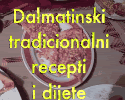"Purim
Purim is a joyous festival during which Jewish children dress up in costumes to listen to the Scroll of Esther read in synagogue, food baskets (Shlach Manos) filled with special Purim pastries such as Hamantashen (Oznai Haman) are exchanged, and a special Purim feast (Seudat Purim) is shared with family and friends."
Purim is a perfectly positioned to be celebrated as the first officially recognized American Jewish holiday. This year it is observed the evening of March 7.
Fortuitously positioned as a harbinger of spring, Purim joins Mardi Gras and St. Patrick's Day to form a triumvirate of formidable fun. As a wheel in this tri-cycle of minor American festivities, deeply rooted in the mythic past, everyone can feel Jewish on Purim. Just as everyone feels Irish on St. Patrick's Day, and Creolish at the Mardi Gras, now finally, a holiday when everyone can feel Jewish.
(These liminal spring festivals are all off-shoots of the ancient Bacchanalian orgies fueled by wine and whimsy.)
This national observance of Purim is especially suited to the American-Jewish experience. Megillat Esther, the Scroll of Esther, is the inspiration for Purim. The events of the Scroll take place entirely in the Diaspora. There, too, the Jews seem to be deeply involved in the political life in the capitol of the Persian Empire. They certainly are acculturated enough that a nice Jewish girl named Hadassah (Myrtle) can marry the King. They use their lobbying power, in the form of Queen Esther, to overcome a threat of annihilation. Haman's conspiracy is foiled and Esther's uncle, Mordecai, the power behind her throne, is elevated to a status of respect and authority.
Along with her counterparts, Mardi Gras and St. Patrick's Day, Purim obliges that we perform all activities in a state of gadlut mohin (expanded consciousness). This state can thankfully be induced in a variety of marvelous ways: singing, dancing, eating and drinking. The common denominator of all of these paths is being imbued with the spirit (or spirits) of your choice. But while Purim celebration is fueled by all manner of spirits, it is not a time for beer-guzzling. It is, rather, a time to indulge in great slivovitz (plum brandy), a long-treasured bottle of Napoleon brandy or B&B, lemon-marinated vodka, or a splendid single-malt scotch (room temperature, never on the rocks). At our annual Purim seudah (festive meal served on Purim afternoon) our host has accustomed us to frozen pineapple-coconut daiquiris of unknown octane. It's so thick we eat it with a spoon.
By the third chapter of the megillah -- it is read first on the evening of Purim and then a second time on Purim day -- we not only can not distinguish (ad shelo yadah) between cursing Haman (arur haman) and blessing Mordecai (barukh mordekhai). As libations continue to be imbibed even Uncle Irv is beginning to look cute in the "Sweet Charity" chemise and high-heel number he's wearing. Maybe it's the fishnet stockings?
On Purim we flip reality on its head. Like a reversible parka Purim pulls us inside out. Creating the yang to the yin of Torah, providing the raucous background to the saga of the Jews, Purim revels in revelation of the hidden. On this holiday of masquerades and role reversals we reveal the deeper sides of ourselves, and we are permitted to conceal what is normally exposed.
The Scroll of Esther is a parody of the intrigue in the Royal Persian court. It is this art of parody that underlies much of the Jewish humor tradition down to our day. It is the Purim parody embodies in the Purim shpiel (play) that provided the source of the theatrical in Jewish life. The rabbis saw the Greco-Roman theater of their days s a place of lewdness, licentiousness and idolatry thus Purim wedged itself into the tradition to provide rudimentary opportunities for Jewish performance.
Purim provides the background for the emergence of the stand-up comedian, the badkhan, a grammenmeister, a rhyme master, who regaled the inebriated congregations throughout Jewish Eastern Europe for centuries, is a direct antecedent to the Sid Caesar "Show of Shows," Mel Brooks' parodies of classic films, and "Saturday Night Live." The badkhanim regularly appeared at weddings and long before Adam Sandler's "Wedding Singer" provided entertainment for the week-long nuptial celebrations.
These badkhanim were parts of larger groups of Purim shpielers, who went from village to village, vagabond street artists. When Abraham Goldfaden, the founder of Yiddish theater at the end of the 19th century, sought actors for his performances, he found them in the associations of Purim shpielers and badkhonim that existed in many major cities of Eastern Europe.
Simply put, Purim kept Jewish humor alive in the most devastating of circumstances of the Jewish Diaspora.
The custom of Masquerade is also another feature of the Purim celebration that fits into the American ethos. Unlike Halloween and its associations with ghoulishness, the revelries of Purim are couched into the unbridled reversal of authority when others dress like the king, who is really is the king. This "dangerous" aspect of Purim is its most delicious feature.
We are what we wear and when we are hidden beneath our masks we are free to exhibit what is usually hidden. The choice of costume on Purim is revelatory of one's true nature.
While that is probably no etymological connection of the words revels and revelations, it is the Purim spirit that provides that touch of insight that is only ascertained in a state of intoxication.
Finally, Purim is a shoo-in candidate for its adoption as an American Jewish holiday, because of the Purim story's profound secularity. God is never mentioned in the Scroll of Esther. Only later will the rabbinical commentaries attempt to discover the Divine precisely in its absence from the story.
One rabbinic wag, perhaps imbued by many jiggers of slivovitz, said that after the Messiah will come and all of the holidays will be eliminated the only one that will remain is Purim.
So let us encourage introducing Purim to our neighbors of all backgrounds. Let everyone don their masks and enter into this potent Jewish ritual. I can't wait for the PBS Purim shpiel programs, the Homentasch Bakeoffs on the Food Network, the Project Runway Purim costume competitions, the NPR annual megillah reading by Morgan Freeman and the annual Purim parades sponsored by our nation's leading distilleries.
Two other customs that will resonate will all America are the giving the gifts of pastry and fruits to our neighbors (the opposite of the Halloween trick or treat) and the mandatory gifts to the poor, preferably in cash, so all in our community will be able to start the month-long preparations for Passover and the return to order from disorder, as Jews everywhere sit down for the Seder ritual. At Passover we celebrate the birth of a people a nation, a collective liberation. At Purim we celebrate the liberation of the individual spirit.
So raise and glass and say l'chaim to bringing Purim into the public square.
Rabbi Moshe Waldoks is the co-editor of The Big Book of Jewish Humor, not in print for over 30 years. He serves the Temple Beth Zion (TBZ) community in Brookline, MA. He can be reached at rebmoshe@tbzbrookline.org.
- Sent using Google Toolbar
Kids Make Hamantashen (parve)
This is a simple Hamantashen recipe which you can make with your children. Baking holiday treats with your kids is a great way to create special holiday memories which they will carry on with them.
Prep Time: 20 minutes
Cook Time: 15 minutes
Total Time: 35 minutes
Ingredients:
* 2/3 cup margarine, room temperature
* 1/2 cup sugar
* 1/4 cup orange juice
* 1 cup whole wheat flour
* 1 cup all-purpose white flour
* pie filling
* egg, beaten
* sugar for garnish
Preparation:
1. Blend butter and sugar thoroughly.
2. Add flour and orange juice, alternating.
3. Refrigerate batter for a few hours.
4. Roll out dough as thin as you can.
5. Cut out 3-4 inch circles.
6. Put a tablespoon of filling in the middle of each circle.
7. Fold up 3 sides to form a triangle (Overlap the sides so only a little filling shows through the middle).
8. Bake at 375 degrees for about 10-15 minutes (bake until golden brown, but take out before the filling boils over).






















0 comments:
Post a Comment